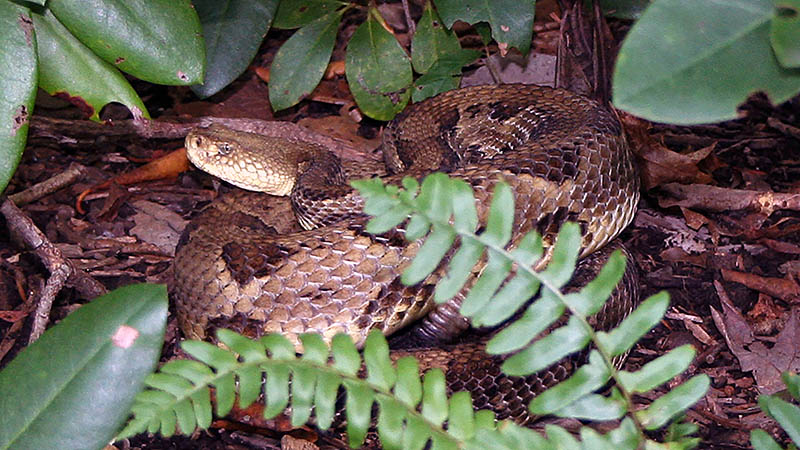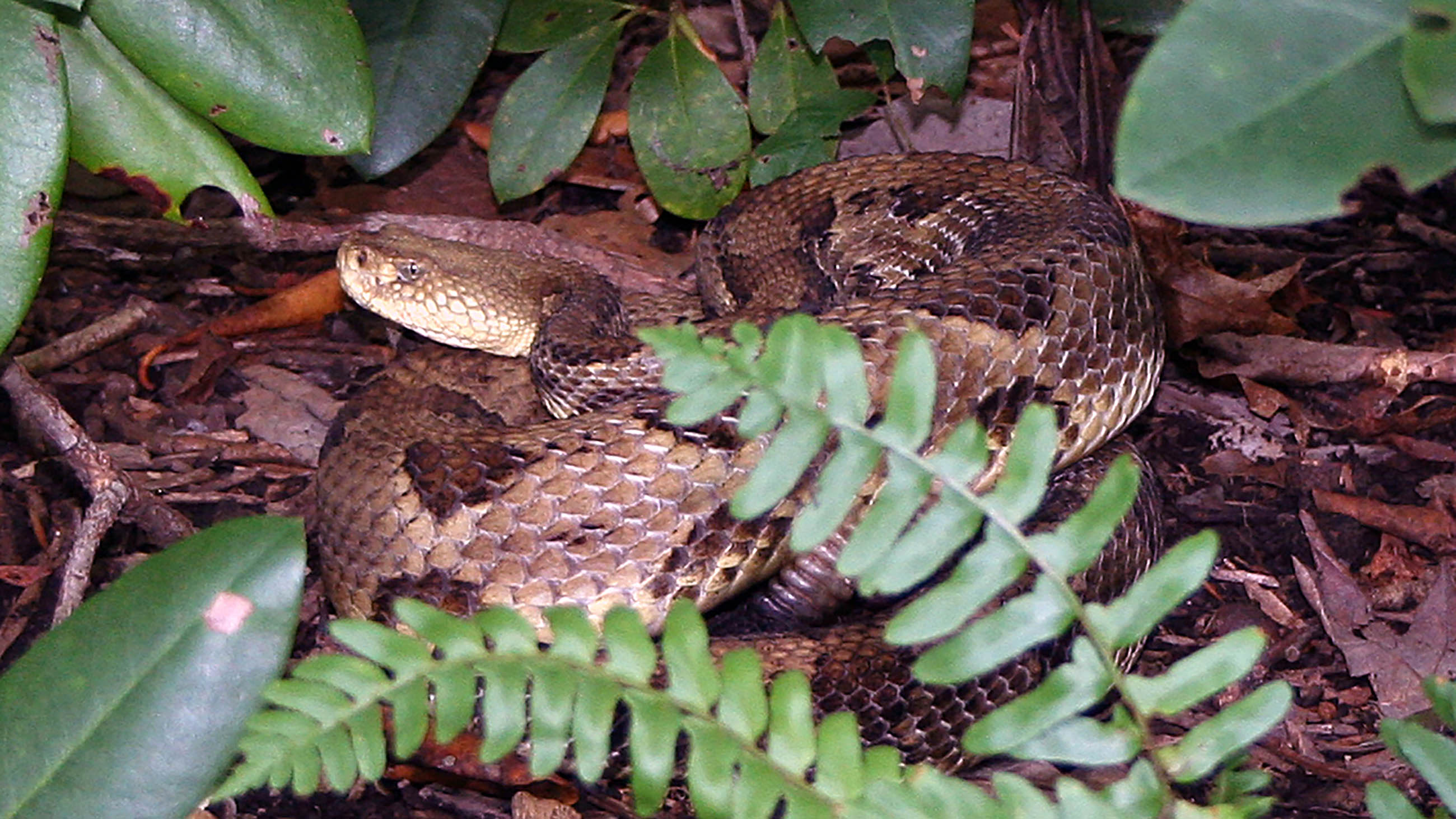On Rattlesnakes (and Getting Scooped)
Massachusetts isn’t usually thought of as rattlesnake country, but it used to be.
New England’s timber rattlesnakes were once a symbol of revolution and the budding nation. During the Revolutionary War, the first United States Marines flew a yellow flag emblazoned with a striking rattlesnake and the words “Don’t Tread On Me.” In an essay published in Pennsylvania Journal in 1775, Benjamin Franklin called the snake “an emblem of vigilance.” He continued: “She never begins an attack, nor, once engaged, ever surrenders: She is therefore an emblem of magnanimity and true courage.”

State officials in Massachusetts want to re-introduce rattlesnakes to the central part of the state. Locals aren’t so happy about it. (Visual by National Park Service)
All that symbolism couldn’t help save the snake though — timber rattlesnakes are all but gone from the Northeast now, and their population continues to drop. But the state has a plan to save them.
I should know: Just this spring, I wrote my journalism master’s thesis at Boston University on a plan developed by the Massachusetts Division of Fisheries and Wildlife to establish a new den of rattlesnakes on an island in the Quabbin Reservoir in central Massachusetts. Of course, many local residents don’t like the idea. Not only do many find the prospect of a local venomous snake population unpleasant or frightening, but they also see it as another chapter in the same old story of their area. The people there have borne interference by the government in Boston since Shay’s Rebellion in 1786, and to some, the rattlesnake project is one more unwelcome imposition. The opposition has been vocal enough that state legislators recently voted to hold off on the rattlesnake reestablishment for one year.
It was all part of my thesis — my first foray into long-form journalism, and one filled with history, biology, evolution, local politics and big questions on which species are worth saving and why. I was busy making plans to place the piece in a national publication — perhaps even this one — when The New York Times came along a few days ago and wrote their own version of the story.
In journalism, we call this getting scooped. Alas.
For readers interested in my take on the controversy — one that complements the very fine work of The Times — the full thesis can be found on my personal blog at www.ianevans.xyz. And here’s one thing you won’t get from the paper of record: an on-the-scene audio piece covering the rattlesnake’s troubled reintroduction to the Quabbin. You can hear that as part of this month’s Undark podcast, available here, or via your favorite podcasting app.











Comments are automatically closed one year after article publication. Archived comments are below.
Since when is it wrong to have 2 outlets cover the same story? And when one of the pieces is written by someone who wrote the book on the topic?
As a local resident, I’d appreciate any more information on this that you can offer. I would like to advocate for the snakes, and more stories and sources would help when we write letters to our state authorities.
Good point, Mary, and thanks for raising it. In this case, we mostly wanted to give a talented young science writer a forum for his very detailed exploration of the issue. In fact, as befitting a dissertation, the piece was so detail rich that we figured it was a bounty of information for any reader.
Still, it’s worth noting – and may be helpful to you – that these are far from the only information sources about the rattlesnake reintroduction program at Quabbin Island. For instance, masslive.com has done a terrific job of tracking the issue. I linked to one story but there are many more on the site. It’s been covered by the Salt Lake City paper, among others. By WBUR, The Washington Post, Newsweek, and The Christian Science Monitor, and The Boston Globe, among many others.
And, by the way, I also advocate for snakes. They’re beautiful, fascinating creatures and far more respectful of us than we are of them.